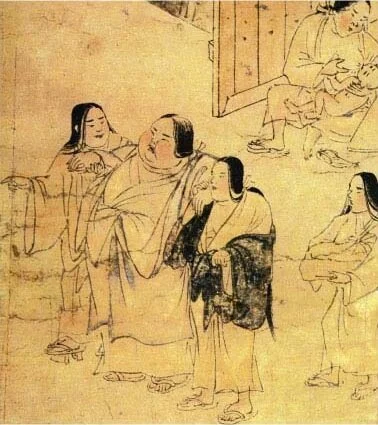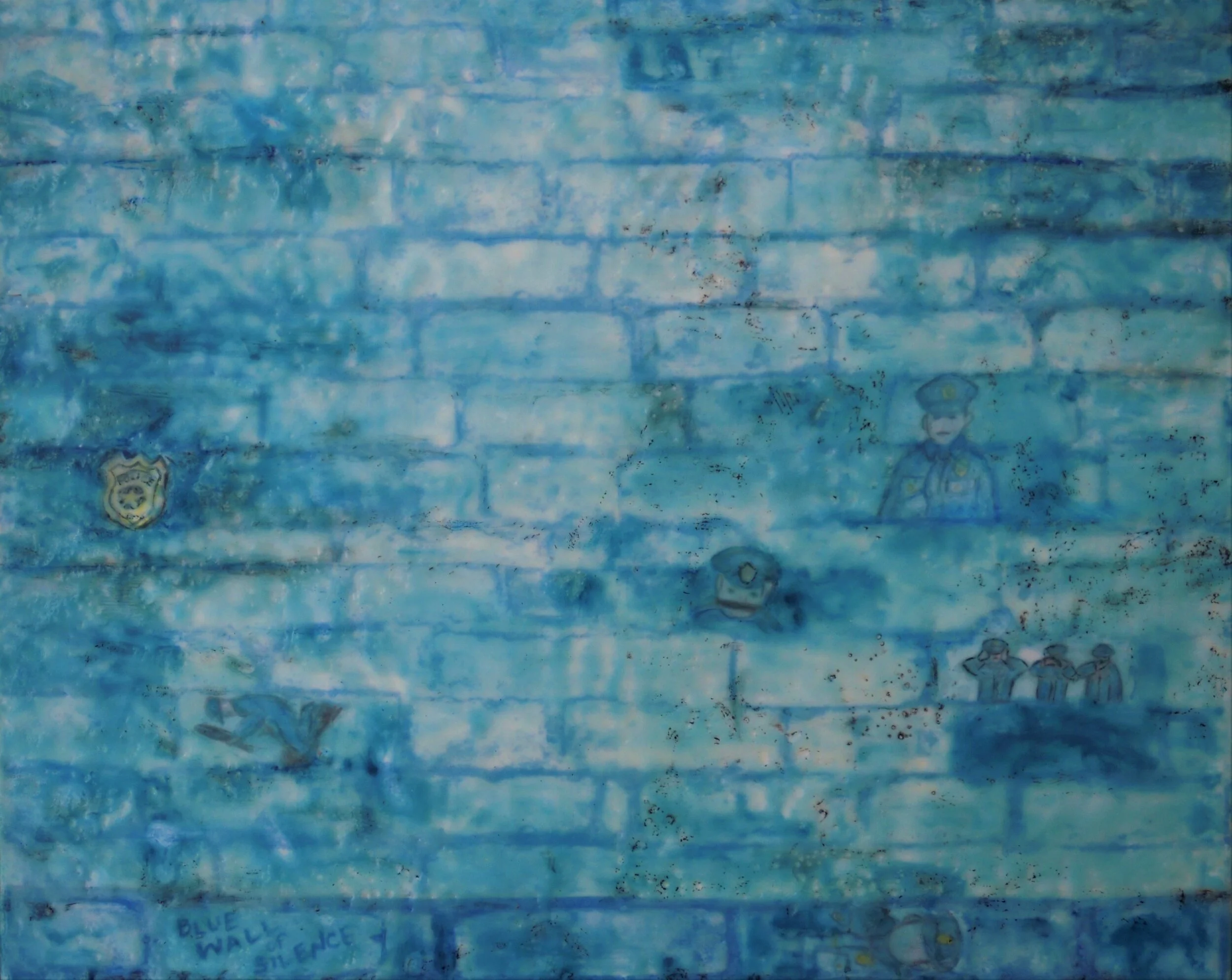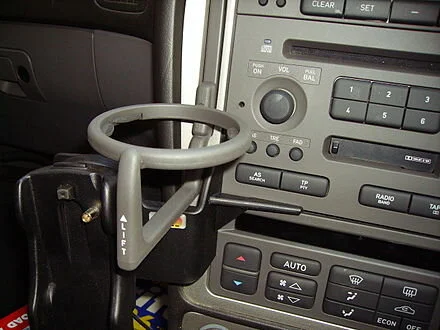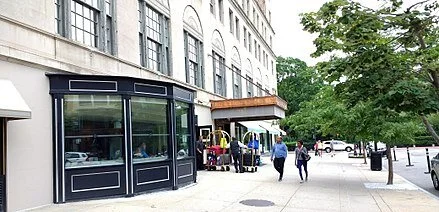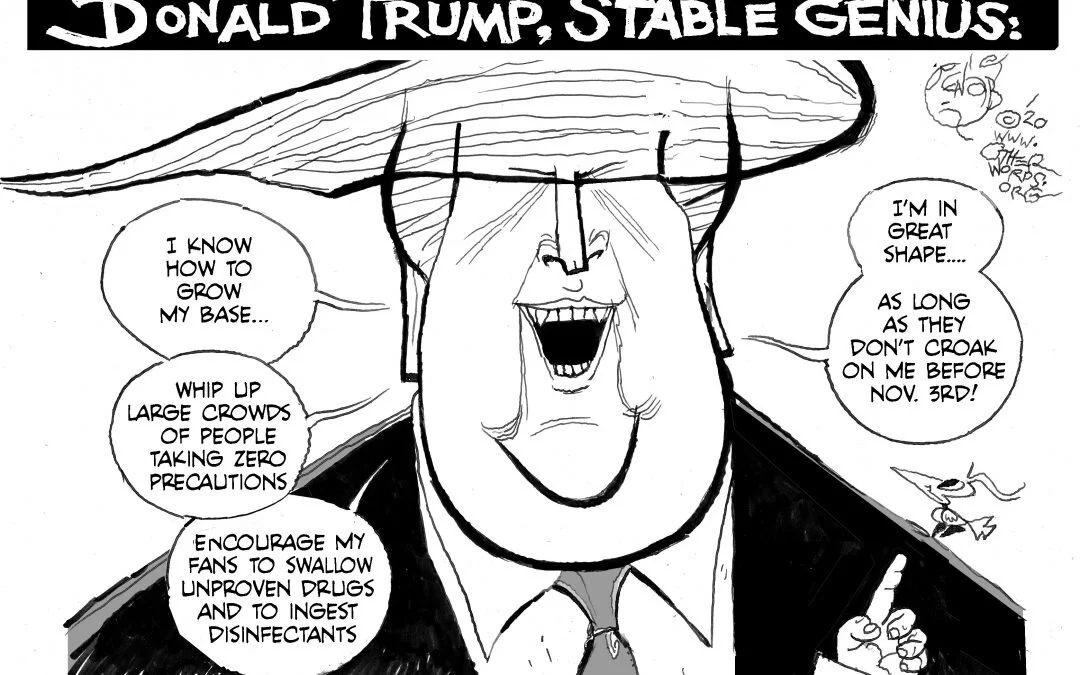
Class of 2020 should seek internships to reduce long-term economic ‘scarring’
BOSTON
From The New England Journal of Higher Education, a service of The New England Board of Higher Education (nebhe.org)
2020 will forever be remembered as the year of COVID-19, the illness caused by a novel coronavirus. This year, the term “social distancing” became part of our vocabulary, and virtual proms and online commencement ceremonies became commonplace. According to Georgetown University Center on Education and the Workforce analysis of HIS Markit Forecast Summary of May 2020, on the economic front, 2020 is the year when the gross domestic product (GDP) is predicted to plunge and unemployment to rise to its highest level since the Great Depression.
Job postings as estimated by EMSI are down 32%, and more than 38 million Americans have filed for unemployment—so far, according to the U.S. Department of Labor. Every economic sector has been affected, although some have lost more jobs than others.
Notably, four sectors accounted for close to 70% of the jobs lost even though they account for just over half of the jobs in the economy. Leisure and hospitality, wholesale and retail trade, healthcare, and professional and business services make up 70% of job losses in April 2020, but those sectors had accounted for only 53% of jobs overall. Leisure and hospitality has been particularly hard hit, shouldering almost four times as many job losses compared to its size in the overall economy, according to Georgetown University analysis of government data.
Though leisure and hospitality is shouldering the heaviest burden of job losses, personal services (such as hair stylists, fitness trainers, and tour guides) also lost relatively higher fractions of jobs as well.
Although white-collar jobs in sectors such as professional and business services have been affected, the impact has been disproportionately higher in traditional blue-collar jobs—and according to some analysts, those jobs have been filled predominantly by women, in occupations such as waitresses, cashiers and sales. Lack of experience also make young workers more vulnerable any type of economic downturn and less likely to be employed in what little jobs remain.
The graduating class of 2020 will face a difficult job market, and the adversities will follow them for years. New graduates facing these types of jobs numbers will be subject to scarring—reduced lifetime incomes caused by entering the workforce during a downturn. Faced with the quandary of choosing between a subpar job or prolonged unemployment, new college grads should expect to earn up to 7% less for every 1% increase in the overall unemployment rate in the first few years.
The inertia of pay parity for the scarred class is likely to persist, with graduates still earning 2.5% lower than their peers who entered the workforce during rosier economic times, even 15 years later, according to past analysis by University of Rochester economist Lisa Kahn. Recent graduates fortunate enough to continue working in the internships they secured during the previous year will also see lower wages. The economic hardships faced by the graduating class of 2020 may even percolate down to the graduating class of 2021.
Georgetown University data analysis has shown that traditionally, recent graduates who could afford it weathered economic storms by going back to school and earning an additional credential, test-based license or certification. They figured extra credentials would give them a competitive edge when employers eventually resumed hiring.
COVID-19, however, has forced a reevaluation of that practice. The pandemic has caused chaos on college campuses, and many colleges have gone virtual, offering classes online, rather than in person. Good online connectivity has become necessary for matriculating, taking classes and graduating on time.
Previous researchers have shown as expected, the digital divide disproportionately affects low-income households. Geography also plays a role, with many areas receiving only spotty access to the Internet. Surprisingly, three times as many urban households lack access to broadband internet as rural households, according to recent data analysis on the topic. The seemingly simple solution of going to the local library for Internet access is not viable because of social distancing. Even with a strong Internet connection, however, the online format can be challenging and not necessarily compatible with nontraditional learning styles.
The experiences of the class of 2009, who graduated during the Great Recession—which, before COVID-19 was the worst recession since the Great Depression—are instructive. For them, internship opportunities were a big plus once the economy began recovering. Despite today’s challenges, upcoming graduates should consider taking similar opportunities to shore up their skills for what’s going to be an employer’s market for some time to come. If possible, they should consider holding off on taking jobs until good opportunities return.
Most economists, including a Georgetown analysis of HIS Markit predicts data, estimate a slow return over an 18-month to 36-month time frame. But like the pandemic itself, the timeline is unpredictable and shrouded in uncertainty. We do know, however, that jobs will return. The best bet for new graduates is to continue to prepare by accepting internships, adding credentials such as test-based industry certifications and utilizing informational interviews to tailor resumes, for when they arrive.
Nicole Smith is research professor and chief economist at the Georgetown University Center on Education and the Workforce.
More Posts from this Series
COVID-19 and the Gap Year by Neeta P. Fogg and Paul E. Harrington
My pre-screen life
From Robert Whitcomb’s “Digital Diary,’’ in GoLocal24.com
It’s expected that many more people, what with Zoom, Skype, etc., will be permanently working at home, as employers seek to reduce the danger of infectious disease they might be held responsible for and save a lot of money on real-estate costs.
There are some big drawbacks. Workers will have less idea of what’s going on in their enterprises: they’ll lose some of the ability of understand what their co-workers and bosses are up too; they’ll have fewer opportunities to develop friendships with, and learn from, their co-workers, and they’ll lose the advantages of in-person training.
Body language can speak volumes.
The post-World War II period to about 1990 was the great age of the American office. For much of that time, the economy was healthy, and many folks expected to have long-term work with the same employer.
All the offices I worked in had their social benefits. My first office job, for several summers, was at a shipping company overlooking Boston Harbor and Logan Airport. Much of the work was boring – e.g., filing multi-colored bills of lading – but it had its charms, too, such as talking with truckers at the loading docks, being sent on some errands in downtown Boston, which at that time didn’t look much different than it had in 1937, and going on a lunch boat.
With the newish IBM Selectric typewriters clacking away in the background, I’d chat every hour or so with my office mates, who came from all over Greater Boston and had, for a little office, a remarkably wide range of backgrounds. Most of the men seemed to have served in World War II or the Korean War, and they’d tell me stories about it. The women would often talk about their children, of whom these mostly Irish-and- Italian-Americans, tended to have many, and what was going on in their parishes. But everyone would talk about the news, most of which they’d get from newspapers, which were strewn around the office.
I learned in that office whom to avoid and whom to seek guidance from. One of the latter was an older man, Mr. Gookin, who had had some managerial job at the parent company that didn’t work out and now was a sort of clerk. (Big companies then didn’t fire folks with the abandon they do now.) He took me under his wing. Once, someone, maybe in the cleaning staff, stole $45 I had stuck a drawer. I told Mr. Gookin, who responded: “You’ll lose a lot more than that in this life.’’
Whether in the crowded, smoke-filled and un-air-conditioned newsroom of the old Boston Record America, with its gruff and rumpled scandal-seekers but also with the courtly and natty writer Joe Purcell, who got me the job; the spacious newsroom of the doomed Boston Herald Traveler, which crazies off the streets would sometimes stagger into; the cool and austere newsroom, divided by cubicles, but with many funny people, of The Wall Street Journal, across the street from the doomed World Trade Center; the Art Deco offices of The Providence Journal, and the modernistic but claustrophobic and smoky home of the International Herald Tribune, with its train station-like collection of characters from around the world, there was much to be learned from the people in my office life. Such a range of personalities and backgrounds.
I think that the millions of people who now must work at home will miss a lot of life and learning working at home, though commuting is rarely much fun.
The future summer resort
By 1890, the extension of frequent rail service to the Cape was turning the peninsula into a famous place to go in the summer. Many of the natives were ambivalent about this development.
“The time must come when this coast (Cape Cod) will be a place of resort for those New-Englanders who really wish to visit the sea-side. At present it is wholly unknown to the fashionable world, and probably it will never be agreeable to them. If it is merely a ten-pin alley, or a circular railway, or an ocean of mint-julep, that the visitor is in search of, — if he thinks more of the wine than the brine, as I suspect some do at Newport, — I trust that for a long time he will be disappointed here. But this shore will never be more attractive than it is now.”
― Henry David Thoreau, (1817-62) in Cape Cod
Blurred Boundaries
“Francoise” (color and silhouette, video still), by Melissa Shaak, in the group show (seen online) “The Boundaries Between,’’ at Fountain Street Fine Art, Boston, through June 7.
The gallery says:
“Through collaboration, documentation, and experimentation, artists Jim Banks, Joseph Fontinha, Georgina Lewis, A_Marcel, and Melissa Shaak blur boundaries between our physical and virtual domains. They are investigating longevity, beauty, and resilience; surveilling our behaviors, movements and identity; liberating our imagination by bringing fictional characters to life and immerse us in the digital realm.’’
Chris Powell: Whatever the pandemic, most prisoners are not good risks for release
MANCHESTER, Conn.
How high-minded and humane the clergy members and the civil-liberties union people sound as they clamor and sue for the release of all prisoners in Connecticut -- even murderers -- to protect them against the risk of virus contagion in their confined quarters. Hundreds of prisoners and prison staff members have gotten sick from the virus and seven prisoners have died.
But the complaint is nonsense. The state Correction Department already has released scores of prisoners who were near the end of their sentences, behaved well in prison, were considered good risks, and had family or friends to take them in. But even those prisoners will find it almost impossible to get jobs while the state's economy is so sharply curtailed. Unemployment creates bad temptations for parolees.
Most prisoners are not good risks. Most are not near the end of their sentences. Upon release many could not support themselves honestly even if the economy were operating normally. Most do not have housing and family waiting for them. And most still belong in prison.
For while Connecticut's justice system, like all justice systems, has gotten a few cases spectacularly wrong, convicting innocent men of serious crimes, for most people getting into prison in Connecticut requires career criminality. Indeed, the state is full of chronic offenders with 10, 20 or more serious convictions who still have been given little or no prison time and remain free despite their amply demonstrated incorrigibility.
Most released prisoners get in trouble with the law again within two years. While this is partly because they lack job skills and are released without a job and housing, this does not excuse the government for failing to protect society against them. People who cannot support themselves honestly or are so damaged psychologically that they cannot stop harming others must be locked up, epidemic or no virus.
While this should be obvious, it is hard to find any challenge to the sanctimony of the clergy and civil liberties union. But the other day an inhabitant of the real world, New Haven Police Chief Otoniel Reyes, provided a contrary view.
Chief Reyes told the city's Board of Alders that prisoners recently given early release because of the epidemic -- prisoners judged by the Correction Department to be the best risks -- are already causing trouble again in the city, reviving conflicts with old adversaries.
Some "are really violent and should not be coming out," Reyes told the board, adding that about 17 prisoners released early are now especially dangerous in New Haven again.
The chief said he wished that the Correction Department would consult with his department before releasing prisoners likely return to his city.
In a recent letter to Gov. Ned Lamont, 70 clergy members said releasing prisoners early to avoid virus contagion is "a profoundly moral and ethical issue" -- as if the health of prisoners should be the only consideration here. Consumed by sanctimony, the clergy members give no thought to the safety of others, not even in troubled cities like New Haven where serious crime is a daily occurrence.
This doesn't mean that all prisoners should be denied any chance of redemption. It means that anyone who works his way into prison in Connecticut is already a hard case and that health risks, inevitably high in prison anyway, are no reason to keep inflicting him on everyone else.
Chris Powell is a columnist for the Journal Inquirer, in Manchester, Conn.
A liberating wardrobe
She ate and drank the luscious treats--
Restraint had taken flight--
She knew that she was far from slim
And that her clothes were tight--
She bought some caftans, shawls, and capes
And now her spirit sings
Despite her girth--What liberty
A loosened wardrobe brings —
— Felicia Nimue Ackerman (a Providence poet and philosophy professor)
Left doors unlocked
In the old-fashioned downtown of East Greenwich, R.I. on Narragansett Bay
“We moved around a bit when I was younger, but I grew up primarily in Rhode Island, in a beautiful seaside community called East Greenwich. It was a small town, and so safe that we rarely locked our doors at night.’’
— Michelle Gagnon, crime novelist
Giving the land a voice
Kent Falls, in the Litchfield Hills, foothills of the Berkshires
“New England waterfalls like this one {in Kent Falls State Park, Kent., Conn.}, with their white plumes spilling downward from step to step, remind one of the age and gentleness of New England mountains, and, where they flow, they give the land a voice….Even those less vast than the enormous cataracts of Niagara or Yosemite have their own prodigy and their own cadence — and if you listen carefully…you can hear the white voice of New England among the green.’’
From “New England Waterfall,’’ by novelist and critic Robie Macauley (1919-95, in Arthur Griffin’s New England.
Gone groping underground?
— Photo by J. Pinto
By June our brook’s run out of song and speed.
Sought for much after that, it will be found
Either to have gone groping underground
(And taken with it all the Hyla breed
That shouted in the mist a month ago,
Like ghost of sleigh-bells in a ghost of snow)—
Or flourished and come up in jewel-weed,
Weak foliage that is blown upon and bent
Even against the way its waters went.
Its bed is left a faded paper sheet
Of dead leaves stuck together by the heat—
A brook to none but who remember long.
This as it will be seen is other far
Than with brooks taken otherwhere in song.
We love the things we love for what they are.
— “Hyla Brook,’’ by Robert Frost
Llewellyn King: Pandemic will bring harvest of innovation
WEST WARWICK, R.I.
A plow breaks up the soil, turns it over. If seed is put down, that sprouts along with any other seed that happens to be there, weeds and other wild plants.
The new normal will be a plowed field where all sorts of innovations will spring forth. It will be a time of innovation, creativity and the growth of new products and ideas, as well as a few weeds (bad or greedily exploitive ideas).
Many who had what they believed to be steady jobs will become self-employed, dragooned by circumstance into the gig economy. And they will be the shock troops in an invasion of new inventions. At least that is my belief, and it is supported by empirical evidence that when there is turmoil, there is innovation.
Innovation has been on many lips since good things started to come out of Silicon Valley decades ago. The road to riches and to national predominance, it appeared, was through innovation. The rush was on. But it is one of those things, like happiness, that becomes harder to find the more you seek it.
Universities are busy designing courses in innovation. That is predictably opportunistic but probably futile. Imagine a professor teaching this basic innovation course: Quit your job, survive rejection, and work night and day on a hunch. Most people teaching are teaching because they are not risk-takers, and innovation is about risk-taking writ large.
Research, management and procedure are where the formal setting -- the university -- has its place. But none of the great innovators felt the need to study innovation, from Henry Ford and Thomas Edison to Steve Jobs and the reigning king of innovation, Elon Musk.
It is from desire and necessity that that innovation comes; before the venture capitalist has reached for a calculator, somewhere, somehow someone has been working on an idea.
The great challenge of innovation in times of adversity is not creativity but money. Many great ideas are stillborn because money is harder to raise at such times. Financiers are not as brave as innovators. Still a plethora of good things came out of the 1930s, from musical theater to the Polaroid camera. These days there is more mobility of thought and, therefore, there will be more innovation.
In recent years, innovation has come to mean something to do with computing but that is not an exclusive path.
Sometimes innovation is simply seeing a better idea. In 1969, Neil Armstrong walked on the moon. That was an achievement involving a lot of vision, drive, innovation and money. The next year, something huge happened that involved none of the consuming effort of the space program: Wheels were added to luggage.
In 1984, Lee Iacocca produced the minivan. It was a classic example of exaptation -- a term used in evolutionary biology to describe a trait that has been co-opted for a use other than the one for which natural selection has built it. That was true for the minivan: It was a regular van modified and repurposed.
Likewise, one of the few great, modern fortunes not associated with computers came from Greek yogurt. No invention there. The Greeks did that thousands of years ago. It was a good idea from a Turkish immigrant, Hamdi Ulukaya, founder and chief executive officer of Chobani.
Good ideas are the simplest and most direct way to innovation. Take cupholders in cars. It is extraordinary but true that cupholders began when the convenience store chain 7-Eleven started selling plastic brackets that affixed to your window to hold coffee. In no time, car companies were marketing cars based on the number of built-in cupholders. Not in luxury cars, not in great carriages had so simple a feature been added. That, too, was innovation. Of course, another invention, the throw-away beverage cup, helped.
The lesson is you can innovate, create Uber or Airbnb, if you understand computers. But you can also look around, as with wheels on luggage, cupholders and Greek yogurt, and the true innovator will find products and services aplenty.
The message is, I believe, the true innovator looks around inside the box before venturing outside of it.
Tens of millions of Americans will be ferreting around seeking new and better ways to do things. Some will innovate in ways that will change things forever.
Llewellyn King is executive producer and host of White House Chronicle, on PBS. His email is llewellynking1@gmail.com and he’s based in Rhode Island and Washington, D.C.
MIT, Biogen team up to help students in underrepresented neighborhoods
On main campus of MIT, Cambridge
From The New England Council (newenglandcouncil.com):
”Biogen, the international biotech company, and the Massachusetts Institute of Technology, both in Cambridge, have launched a new online learning program targeted at high school students in historically underrepresented communities. Students in the program will participate in lab simulations and mentorship opportunities for free in order to encourage them to pursue careers in science, technology, engineering, and math (STEM) fields.’’
Plaque in MIT’s Building 6 honoring George Eastman, founder of Eastman Kodak, who was revealed as the anonymous "Mr. Smith" who helped maintain MIT's independence.
Bittersweet in jeans at Holy Cross
“1980 In My Calvins’’ ( recycled denim and thread), by Murphy Grady, in the College of the Holy Cross’s (in Worcester)2020 Senior Concentration Seminar Exhibition, moved online by COVID-19.
The exhibit is titled "énouement," chosen by the students to represent the bittersweet feeling of having arrived at the future and wishing to tell one's past self what that future would entail.
Waltz evenings and polka nights
The Newbury Street side of The Newbury Boston, a landmark building across from the Public Garden. The hotel used to be called the Ritz-Carlton, which was opened in 1927 and, along with the Parker House, has long been considered one of New England’s most prestigious hotels.
“Gaining access to the inner sanctum of Yankee society was a vital aspiration for Joseph and Rose Kennedy, but by the 1970s these old longings had become anachronistic. To outsiders, the exclusive Brahmin waltz evenings at the Ritz {Hotel} in Boston became equivalent to the polka nights at the Polish clubs.’’
— Richard D. Brown, in Massachusetts: A History
The Public Garden, created in 1837, was the first public botanical garden in America.
Showing evolution of color despite COVID-19
From “Invisible Language,’’ by Suelllen Guerreiro, in the University of Massachusetts at Lowell’s (now online only) Spring BFA exhibition. titled “Resilience’’. Guerreiro’s work is a graphic-design project that explores the evolution of color and how our experience of it has changed over time.
”Resilience’’ displays artwork created by the school's BFA candidates and tells how they rose to the challenge of finishing their graduation projects in the midst of the pandemic.
Boat tour in the Lowell National Historic Park, dedicated to the rise of the city as a pioneer of the American Industrial Revolution.
Don Pesci: In the pandemic, separating science and political science
Treating a patient on a ventilator in a hospital’s intensive-care unit
VERNON, Conn.
How scientific is science in the matter of Coronavirus?
There’s science and there’s political science. The one thing we do not want in any confluence of the two is confusion and mass hysteria, which can best be avoided by observing this rule: Politicians should decide political matters and medical scientists should decide medical matters. Occasionally, politicians decide that mass fright can better able convince the general population than rational argument.
The answer to the above question is simple: In the case of new viruses, science, as defined above, must be silent. There can be no “scientific” view of Coronavirus because it is a new phenomenon, the recent arrival of a stranger on the medical block. Concerning Coronavirus, there are, properly speaking, multiple views of different scientists, many of whom will disagree with each other on important points.
Does Coronavirus remain on surfaces for long periods? A couple of months ago, we were told by politicians, relaying the news from “science”, that hard surfaces were repositories of Coronavirus, and that contamination from hard surfaces was as likely as person-to-person contamination. That notion has withered on the vine now that we know Coronavirus is most often spread person to person.
Do adults spread Coronavirus to children, or are children the Bloody Marys? This is an important datum because if children, who are much less likely than adults to die or be seriously ill from Coronavirus, spread the virus to adults, the wholesale closing of schools might be a protective measure.
But if adults pass the virus to children, the current view of many scientists, remediation efforts would be far different. We are told that love covers a multitude of sins including, Agatha Christie advises us, murder. The word “science” misapplied covers, we have seen, a multitude of political sins.If we can learn from our past mistakes, we need not carry our mistakes into the future.
If the question is, “Have politicians in the Northeast made a mistake in trusting to some scientists?” the question is wrongly put. It’s not quite as simple as that. It will always be better to take advice from the horse’s mouth rather than from the horse’s posterior. But in the process, politicians must not allow differing scientists to determine the political course of a state.
Politicians, in the face of a pandemic, should not stop being politicians. That is what we have seen in Northeast states, where Coronavirus has dug in its heels. Here legislative activity has been shut down, and Connecticut Gov. Ned Lamont has been festooned with extraordinary – some would say unconstitutional -- powers.
Like his counterpart in New York, Andrew Cuomo, Lamont has resorted to state-wide business shutdowns and sequestration. But inducing a long-lived recession in Connecticut, sequestration and data collection are not curative, however “necessary” they seem to be to some politicians who are masters in the art of spreading fear.
A vaccine may cure Coronavirus. What is called herd-immunity may reduce infestation. Certain people, in many cases younger people, catch the virus and develop a natural immunity, foreshortening the mass of people fatally exposed to the virus. We know that Coronavirus has spread like a wildfire in nursing homes, because clients in nursing homes are older and subject to other infirmities that in their cases have dramatically increased the fatality rate in Connecticut and New York.
“Science” – real science – warned us of this at the very beginning of the infestation. We knew of a certainty that older people with compromised systems were especially vulnerable. So, knowing this, why did not the governors of Connecticut and New York direct more of their resources to nursing homes? That is a question that must be answered by our “savior politicians.”
Home sequestration, we have been told, helps to flatten the Coronavirus curve. What can this mean if not that sequestration prolongs the time during which the sequestered may in the future be exposed to the virus? Flattening the curve is not curative. Ask any scientist.
The Coronavirus pandemic has been Hell, but it is very important that we should not return from Hell with empty hands.
In Connecticut more than 60 percent of deaths “associated with” Coronavirus occurred in nursing homes; the figure is similar in New York. Cuomo recently acknowledged he was surprised to discover that a sizable majority of people in New York infected with Coronavirus had been sequestered at home. His surprise is surprising.
We are told that business re-opening will occur in Connecticut in three stages, somewhat like a rocket on its way to the moon. But surely business opening should be determined with reference to sections of Connecticut that have been severely or mildly affected by Coronavirus, and the distribution of Coronavirus throughout the state has been mapped by Johns Hopkins University ever since the virus penetrated the United States from its point of origin, Wuhan, China.
These are political decisions that should have been codified in law by a quiescent General Assembly. Political science – yes, there is such a thing – would tell us that we no longer enjoy in Connecticut a republican, small “r”, constitutional government. Instead, Governor Lamont has become our homegrown Xi Jinping, China’s communist tyrant who has now provided Connecticut both with a deadly virus and PPEs, the means of thwarting some of its effects.
Don Pesci is a Vernon-based columnist.
Granite State an outlier
“There’s little question that Vermont (particularly Vermont), Maine, Boston, and Cape Cod, are, together, responsible for the New England image. New Hampshire just doesn’t fit in.’’
— Judson D. Hale Sr. , of Yankee Magazine, in “Vermont vs. New Hampshire, in the April 1992 American Heritage magazine
Shailly Gupta Barnes: In crisis, pols focus on helping the rich
Via OtherWords.org
The COVID-19 pandemic has revealed fundamental inequalities in this country.
With millions of us hurting — especially the poor and people of color — there’s been widespread public support for bold government action to address long-standing social problems. Unfortunately, our lawmakers haven’t met the overwhelming need to focus on the poor and frontline workers.
Instead, trillions of dollars have been released to financial institutions, corporations, and the wealthy through low-interest loans, federal grants, and tax cuts — all without securing health care, wages, or meaningful income support for the unemployed. This is all unfolding as we enter the worst recession since the Great Depression.
As Callie Greer from the Alabama Poor People’s Campaign reminds us, “This system is not broken. It was never intended to work for us.”
This system treats injuries to the rich as emergencies requiring massive government action, but injuries to the rest of us as bad luck or personal failures. It reflects the belief that an economy that benefits the rich will benefit the rest of us, because it is the rich who run the economy.
It is easy to see how this plays out in policies that directly favor Wall Street, corporations, and the wealthy. But we see it even in policies that appear to be more liberal and equitable.
The CARES Act, for example, provided free testing for coronavirus, but not treatment. It offered unemployment insurance for some who’ve lost their jobs, but not living wages for those still working. It identified essential workers, but didn’t secure them essential protections.
The failure to fully care for workers and the poor is the flip side of the belief that the rich will construct a healthy economy out of this crisis. We see it directly as politicians slash money from public programs during this crisis while refusing to touch the accumulated wealth of the few.
In New York state, Gov. Andrew Cuomo passed an austerity budget that will cut $400 million from the state’s hospitals. In Philadelphia, Mayor Jim Kenney revised the city’s five-year budget to include government layoffs, salary cuts, and cuts to public services. Neither Cuomo’s nor Kenney’s budget made the proactive decision to tax the wealthy.
The same is true in Washington state, where Gov. Jay Inslee has been cutting hundreds of millions from state programs, anticipating major declines in tax revenue. This in a state that’s home to two of the wealthiest people in the world, Jeff Bezos and Bill Gates.
Of course, the rich are not the driving economic force in the country. It has become crystal clear during this pandemic that poor people, including frontline workers, actually fuel this economy. “We may not run this country,” said Rev. Claudia de la Cruz back in 2018, “but we make it run.”
But now we see the early rumblings of people coming together to assert this reality and challenge our faith in the rich.
Health-care workers, students, child-care givers, food-service workers, big-box-store employees, delivery drivers, mail carriers, and others are taking action to call out gross inequities and organize our society differently. Demands to cancel rent and to secure housing for all, universal health care, living wages, guaranteed incomes, and the right to unions are being heard all across the country.
Meeting these demands would not only secure the lives and livelihoods of millions of people — it would begin to release our economy from the suffocating grasp of the wealthy and powerful. Instead of waiting for wealth to trickle down, we would revive our economy by raising up the poor.
When you lift from the bottom, everybody rises.
Shailly Gupta Barnes is the policy director for the Kairos Center and the Poor People’s Campaign: A National Call for Moral Revival.
Inn a 'dreamlike atmosphere'
“Inn on the Harbor’’ (oil painting), by Niva Shrestha, of Arlington, Mass., as seen at Galatea Fine Art’s (Boston) online gallery. Galatea says the painting “has a humorous, almost carnival-like quality to it. The buildings seem to stand alone in a sun-washed, dream-like atmosphere. The artist plays with shadows and light; the buildings are treated as if they were pure form, and the deliberate juxtaposition of these angular forms create a Mondrian-like sensibility.’’
See:
and:
galateafineart.com






